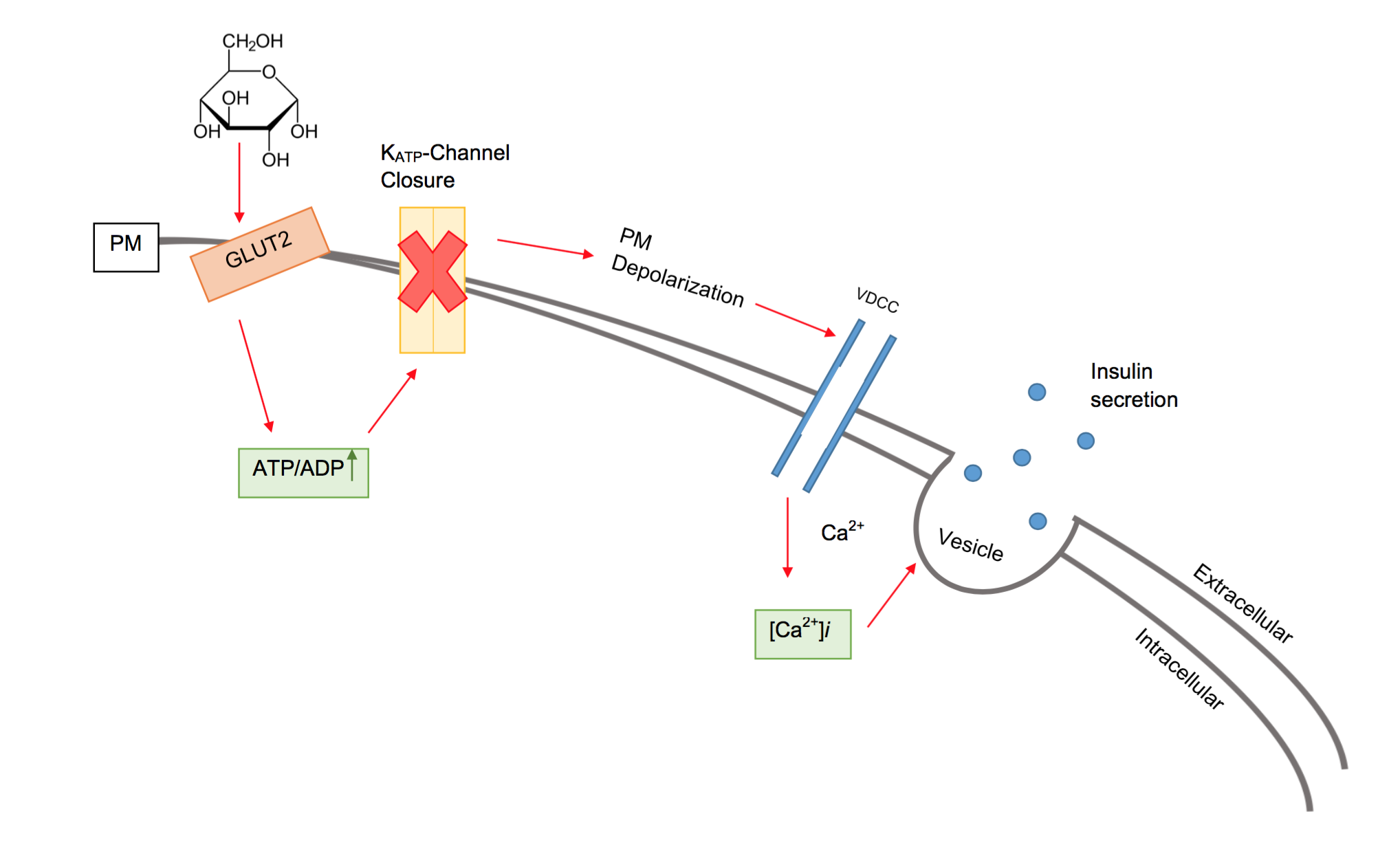|
Insulitis
Insulitis is an inflammation of the islets of Langerhans, a collection of endocrine tissue located in the pancreas that helps regulate glucose levels, and is classified by specific targeting of immune cell (T and B lymphocytes, macrophages and dendritic cells) infiltration in the islets of Langerhans. This immune cell infiltration can result in the destruction of insulin-producing beta cells of the islets, which plays a major role in the pathogenesis, the disease development, of type 1 and type 2 diabetes. Insulitis is present in 19% of individuals with type 1 diabetes and 28% of individuals with type 2 diabetes.In’t Veld, P. (2014). ''Insulitis in human type 1 diabetes: a comparison between patients and animal models.'' Semin Immunopathol 36, 569–579. https://doi.org/10.1007/s00281-014-0438-4Lundberg, M., Seiron, P., Ingvast, S., Korsgren, O., & Skog, O. (2017). ''Insulitis in human diabetes: a histological evaluation of donor pancreases.'' Diabetologia, 60(2), 346–353. http ... [...More Info...] [...Related Items...] OR: [Wikipedia] [Google] [Baidu] [Amazon] |
Type 1 Diabetes
Type 1 diabetes (T1D), formerly known as juvenile diabetes, is an autoimmune disease that occurs when the body's immune system destroys pancreatic cells (beta cells). In healthy persons, beta cells produce insulin. Insulin is a hormone required by the body to store and convert blood sugar into energy. T1D results in high blood sugar levels in the body prior to treatment. Common symptoms include frequent urination, increased thirst, increased hunger, weight loss, and other complications. Additional symptoms may include blurry vision, tiredness, and slow wound healing (owing to impaired blood flow). While some cases take longer, symptoms usually appear within weeks or a few months. The cause of type 1 diabetes is not completely understood, but it is believed to involve a combination of genetic and environmental factors. The underlying mechanism involves an autoimmune destruction of the insulin-producing beta cells in the pancreas. Diabetes is diagnosed by testing the leve ... [...More Info...] [...Related Items...] OR: [Wikipedia] [Google] [Baidu] [Amazon] |
NOD Mice
Non-obese diabetic or NOD mice, like biobreeding rats, are used as an animal model for type 1 diabetes. Diabetes develops in NOD mice as a result of insulitis, a leukocytic infiltrate of the pancreatic islets. The onset of diabetes is associated with a moderate glycosuria and a non-fasting hyperglycemia. It is recommended to monitor for development of glycosuria from 10 weeks of age; this can be carried out using urine glucose dipsticks. NOD mice will develop spontaneous diabetes when left in a sterile environment. The incidence of spontaneous diabetes in the NOD mouse is 60–80% in females and 20–30% in males. Onset of diabetes also varies between males and females: commonly, onset is delayed in males by several weeks. The mice (as well as C57BL/6 and SJL) are known to carry IgG2c allele. History Non-obese diabetic (NOD) mice exhibit a susceptibility to spontaneous development of autoimmune insulin dependent diabetes mellitus (IDDM). The NOD strain and related strains wer ... [...More Info...] [...Related Items...] OR: [Wikipedia] [Google] [Baidu] [Amazon] |
Beta Cell
Beta cells (β-cells) are specialized endocrine cells located within the pancreatic islets of Langerhans responsible for the production and release of insulin and amylin. Constituting ~50–70% of cells in human islets, beta cells play a vital role in maintaining blood glucose levels. Problems with beta cells can lead to disorders such as diabetes. Function The function of beta cells is primarily centered around the synthesis and secretion of hormones, particularly insulin and amylin. Both hormones work to keep blood glucose levels within a narrow, healthy range by different mechanisms. Insulin facilitates the uptake of glucose by cells, allowing them to use it for energy or store it for future use. Amylin helps regulate the rate at which glucose enters the bloodstream after a meal, slowing down the absorption of nutrients by inhibit gastric emptying. Insulin synthesis Beta cells are the only site of insulin synthesis in mammals. As glucose stimulates insulin secretion, ... [...More Info...] [...Related Items...] OR: [Wikipedia] [Google] [Baidu] [Amazon] |

